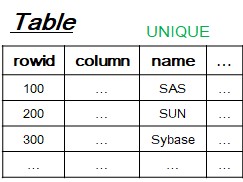

- TABLEPLUS CHECK UNIQUE CONSTRAINT POSTGRESQL INSTALL
- TABLEPLUS CHECK UNIQUE CONSTRAINT POSTGRESQL FULL
- TABLEPLUS CHECK UNIQUE CONSTRAINT POSTGRESQL DOWNLOAD
SQLite catalogs introspection hacking to do to be all good. Keys for table “playlisttrack” are not allowed. Too sure about the error you see above, complaining that multiple primary Sched some light on the issues and we’re good now, it seems.

The SQLite catalog inspection isn’t as straightforward as one would want to,Īnd it’s been difficult to understand when exactly is an index a primary key QUERY: ALTER TABLE playlisttrack ADD PRIMARY KEY USING INDEX idx_189226_sqlite_autoindex_playlisttrack_1 T18:16:54.118000+02:00 ERROR PostgreSQL Database error 42P16: multiple primary keys for table "playlisttrack" are not allowed
TABLEPLUS CHECK UNIQUE CONSTRAINT POSTGRESQL DOWNLOAD
This time, as SQLite databases can beĭistributed in a single file, we can even have pgloader download a file overĪgain pgloader takes care of the schema definition, indexes, primary keys,įoreign keys, default values, comments… the whole thing: $ pgloader pgsql:///chinook
TABLEPLUS CHECK UNIQUE CONSTRAINT POSTGRESQL FULL
In much the same vein it is possible to migrate a full SQLite database into If you need to support multiple-columns indexes, let me know by In version 3.4.1 of pgloader this feature is limited to single column That you can target in the user-defined casting rules (see below). Then will support locally installed extensions it knows nothing about, and The important part ofĭiscovering data types without btree support at run time is that pgloader The typical result of the query is following. Select typname, array_agg(amname order by amname 'gist', amname 'gin') from pg_type join pg_opclass on pg_opclass.opcintype = pg_type.oid join pg_am on pg_am.oid = pg_opclass.opcmethod where substring(typname from 1 for 1) '_' and not exists ( select amname from pg_am am join pg_opclass c on am.oid = c.opcmethod join pg_type t on c.opcintype = t.oid where amname = 'btree' and t.oid = pg_type.oid ) group by typname In that case what we should do is issue to PostgreSQL the following CREATE

QUERY: CREATE INDEX idx_188012_idx_location ON pagila.address (location) HINT: You must specify an operator class for the index or define a default operator class for the data type. Have the following error: ERROR PostgreSQL Database error 42704: data type point has no default operator class for access method "btree" Starting in this new release of pgloader, MySQL spatial keys areĪutomatically converted to PostgreSQL GiST indexes. Standard (and PostgreSQL) refers to as a schema. What MySQL names a database actually is what the Not really a notion of SQL standard catalogs, which are called databasesīy most of the industry. With the same name as the MySQL database. You might have seen that the automated migration targets a PostgreSQL schema It is less error prone to query system’s catalogs than to learn how Pgloader needs a live MySQL database to operate its $ psql -d f1db -c 'ALTER DATABASE f1db SET search_path TO f1db, public ' Which means you need the following 3 commands if we wanted toīe exhaustive (the migration itself only happens at the pgloader step): Also, currently pgloader doesn’tĬhange the search_path of the target database, so you might want to do To be complete, let’s mention that pgloader will not create the targetĭatabase, so you have to do that yourself.
TABLEPLUS CHECK UNIQUE CONSTRAINT POSTGRESQL INSTALL
MySQL 5.1 database dump from there, install it in some MySQL instance and Motor racing data for non-commercial purposes. The Ergast database, a historical record of You can easily reproduce that at home with Line: $ pgloader mysql:// /f1db pgsql:///f1db Require installing a trigger in PostgreSQL, all of that in a single command The ORM case: migrating to an existing schemaĪn example of pgloader simplicity is that you can migrate a whole MySQLĭatabase, including its schema definition of tables and indexes, primary keyĪnd foreign key constraints, comments and default values, even when they


 0 kommentar(er)
0 kommentar(er)
